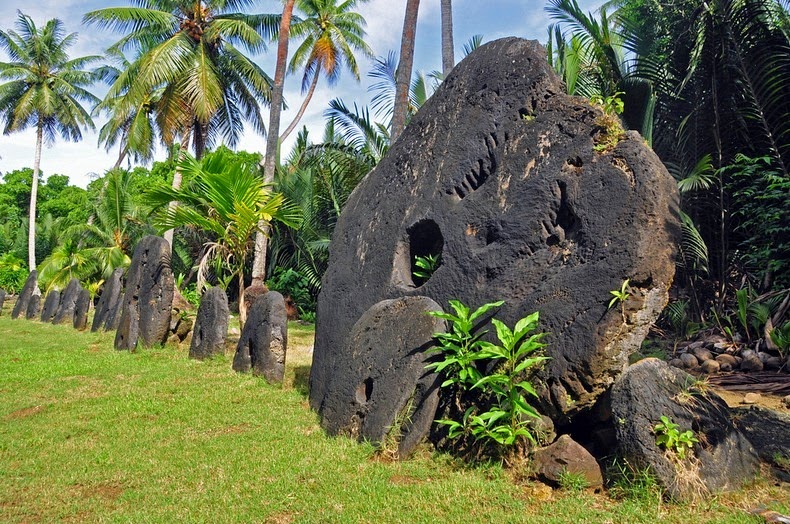The biggest money in the world - Rai stones of the island Yap


Numismatics, or coin collecting, is a widespread hobby and a lifelong passion of many people. Coin collectors are willing to spend a lot of money and travel far to get a unique coin. However, there is one place on our planet, coins from which will never belong in anyone's collection - not only because they are not for sale, but also because they are huge and heavy. We are talking about Rai stone money, which is one of the attractions of Yap island in the Federated States of Micronesia.
Rai coins are large is discs with a hole in the center, weighing up to 5 tons, 4 meters in diameter. Obviously, you can't carry this money around in your wallet or keep it in a safe at home. Because of that, Rai coins just lay around in the streets of the island without any danger of being stolen. They have been the island's currency for 80 years. During this time, no new coins have been manufactured or taken out of the circulation.
The history of stone money goes back to the ancient times, when Yapese arrived to Palau and saw huge boulders scattered around the island. These were pieces of aragonite, which is the basis of pearl shells and pearls, and which were so pleasing to the eyes, that Yapese wanted to use it as coins. After receiving the local chief's consent, the strongest men of Yap started carving the massive boulders. It was too hard to transport those boulders to Yap and work on them there, so they decided to make coins on Palau and then transfer them to their native island on sturdy rafts. Not all money transfers went well, and many of those coins are now resting on the bottom of the ocean, attracting modern divers.
It took months to carve out a coin using primitive tools. Rai stones are shaped as a disc to symbolize full moon, and the hole in the middle was made to make their transportation easier – Yapese would put long poles through the hole in the coin and roll them towards the water.
The value of each coin is measured according to several factors. The larger the size of a coin and the more beautiful the stone, the higher its value. The time taken to manufacture a coin, risk factors and the coin owner's social status are also considered. Interestingly, even the coins which sank to the bottom of the ocean still have their value and can be used virtually, just like the coins on land.
In the 20th century, with the development of technology and navigation, it became easier to handle stones and transport them, so even ordinary islanders were able to own stone money. Modern Rai stones can be even bigger in size, because it is easier to manufacture them, however, this doesn't increase their value. Besides the giant valuable money there is “small money” as well – about 10 cm in diameter, which one can actually carry around. When making a purchase or other financial transactions, the big coins remain standing in the beautiful, picturesque groves, where they were before, and the name of the new owner is carved into the stone.
As a result of thriving technology and fluctuations in the Yapese market, in the 30s of the last century there were more coins than residents. But during the WWII, when the island was occupied by the United States, many Rai stones were confiscated. Part of them went to the construction of fortifications, some stolen, and some survived. Today the remaining Rai stones are a cultural heritage strictly protected by the state.
In a way, Rai stones phenomenon is similar to Bitcoin – it is sufficient that the owner of the money is recognized, just like the Bitcoin protocol, where ever transaction is recorded on the computers of Bitcoins miners.



Leave a comment
0 Comments